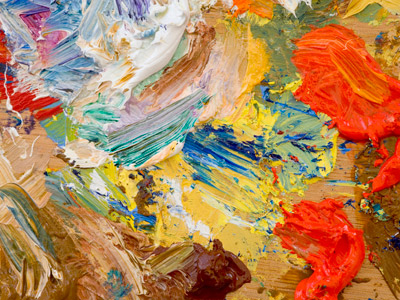
Experimentation
This quiz addresses the requirements of the National Curriculum KS3 in Art and Design for children aged 11 to 14 in years 7 to 9. Specifically this quiz is aimed at the section dealing with producing creative work, experimenting with and exploring ideas, and recording experiences.
Children will have learnt a variety of artistic techniques and processes in KS1 and KS2. Experimenting with a variety of media is an important part of creative development as children learn new techniques by learning how to control and change materials in order to produce the effect or finish they want. By the time students reach KS3, they will be expected to understand how to use and manipulate a widening variety of media in order to create new and unusual effects and finishes.
Exploration of ideas and pushing the boundaries is a very important part of creative development and without it students may tend towards 'safer' options which results in work which can be classed as stagnant or repetitive.
Ready for more?
not all...
quizzers. Try to win a coveted spot on our Hall of Fame Page.







